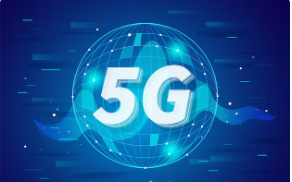The advent of 5G technology is poised to revolutionize global communication, bringing unprecedented speed, connectivity, and reliability to wireless networks. As the fifth generation of mobile networks, 5G promises to transform not only how we communicate but also how we interact with the world around us. This article explores the key features of 5G, its potential impact on various industries, and the challenges that need to be addressed for its successful implementation.
1. Understanding 5G Technology
5G technology represents a significant leap forward from its predecessor, 4G LTE. It offers several key advantages:
- Faster Speeds: 5G networks can achieve speeds of up to 10 Gbps, which is up to 100 times faster than 4G. This means that large files can be downloaded in seconds, and streaming high-definition videos will be seamless.
- Lower Latency: 5G reduces latency to as low as 1 millisecond, compared to around 50 milliseconds for 4G. This ultra-low latency is critical for applications that require real-time responsiveness, such as autonomous vehicles and remote surgeries.
- Greater Capacity: 5G can connect significantly more devices per square kilometer than 4G, supporting the growing number of Internet of Things (IoT) devices and enabling smart cities.
- Enhanced Reliability: 5G networks are designed to be more robust and reliable, with better coverage and fewer dropped connections.
2. Transforming Industries
The impact of 5G technology will be felt across various industries, driving innovation and creating new opportunities.
- Healthcare: 5G enables telemedicine and remote surgeries, allowing doctors to perform procedures from thousands of miles away with minimal delay. It also supports real-time monitoring of patients through connected devices, improving the management of chronic diseases and emergency response.
- Transportation: Autonomous vehicles rely on fast and reliable communication networks to navigate safely. 5G’s low latency and high reliability make it possible for self-driving cars to communicate with each other and with infrastructure, reducing accidents and improving traffic flow.
- Manufacturing: The concept of smart factories becomes a reality with 5G. Machines and robots can communicate seamlessly, leading to more efficient production processes, predictive maintenance, and reduced downtime.
- Entertainment: The media and entertainment industry will benefit from 5G’s high speeds and low latency, enabling new experiences such as virtual reality (VR) and augmented reality (AR). Consumers can enjoy immersive gaming, live streaming, and interactive content without buffering or lag.
- Education: 5G can transform education by enabling remote learning and virtual classrooms with real-time interaction. Students can participate in immersive lessons, access high-quality educational resources, and collaborate with peers globally.
3. Challenges and Considerations
Despite its potential, the deployment of 5G technology faces several challenges:
- Infrastructure: Building a 5G network requires significant investment in new infrastructure, including the installation of small cells and upgrading existing cell towers. This is a time-consuming and costly process.
- Spectrum Availability: 5G operates on a wider range of frequencies than previous generations, including high-frequency millimeter waves. Ensuring adequate spectrum availability and managing interference are critical for optimal performance.
- Security: With increased connectivity comes heightened security risks. Protecting 5G networks from cyber threats and ensuring the privacy of user data are paramount.
- Regulation and Standardization: The global rollout of 5G requires coordination between governments, regulatory bodies, and industry stakeholders to establish standards and regulations that promote interoperability and competition.
4. The Future of Global Communication
As 5G technology becomes more widespread, it will lay the foundation for future innovations and advancements. Here are a few potential developments:
- 6G and Beyond: While 5G is still in its early stages, research is already underway for the next generation of wireless technology, 6G. Expected to offer even faster speeds and lower latency, 6G could enable applications we can only imagine today.
- Smart Cities: 5G will be the backbone of smart cities, where everything from traffic lights to waste management systems is connected and optimized. This will lead to more efficient use of resources, reduced pollution, and improved quality of life.
- Global Connectivity: 5G has the potential to bridge the digital divide by providing high-speed internet access to underserved and remote areas. This can spur economic development and improve access to education, healthcare, and other essential services.
Conclusion
The introduction of 5G technology marks a new era in global communication. Its superior speed, low latency, and enhanced capacity will revolutionize industries and transform our daily lives. While challenges remain in its deployment and implementation, the potential benefits of 5G are immense. As we move towards a more connected world, 5G will play a crucial role in shaping the future of communication, driving innovation, and fostering a more inclusive digital society.











